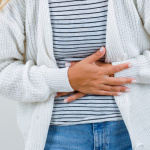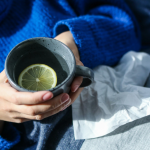Looking after your joint health becomes even more of a priority, the longer we spend on the planet. Joints are crucial to our mobility and if they start to become stiff and sore it can be difficult to maintain our routines and keep active. The human body has an amazing capacity to repair itself, however, our joints can at times, need extra love and care.
A joint is the connection between two bones in the body. Joints and their supporting structures allow you to bend your elbows and knees, move your hips, turn your head and even move your fingers.
Smooth tissue called cartilage, synovium and a lubricant called synovial fluid, cushion the joints so that our bones do not rub together. Increasing age, injury, poor movement patterns and carrying too much body fat can lead to increased wear and tear of cartilage – which subsequently can lead to discomfort, pain or even debilitating joint conditions.
Fortunately, taking steps to protect our joints now can reduce the chances of needing to replace them later in life. Here are a number of ways you can support your joints.
Fundamental movements
There are seven key movements that are necessary for life and the earlier we learn (or relearn) how to do these with precision, the less wear and tear on the joints occurs in the first place. These movements are squat, bend, lunge, push, pull, twist and gait. Having good body awareness and executing these basic motion patterns well are a key aspect in preventing joint degradation.
Muscle strengthening exercise
Muscles essentially act like shock absorbers in our bodies and help to stabilise and protect joints. Muscle strengthening movement such as weight training can be incredibly protective for joint (and bone) health. It becomes increasingly important as you age that you continue to strengthen your muscles with weight bearing exercise. Knee joints in particular are the most prone to wear and tear – so strengthening the muscles with movement such as cycling, can help protect them from premature damage.
Joint mobility movements
When we move a joint, in a safe and full range of motion, we move the synovial fluid within the joint. This fluid is the joint’s lubrication. By moving our bodies we help the synovial fluid to move. This joint movement moves the old fluid out and allows new fluid to move in. Old synovial fluid can accumulate mineral deposits and microbes. Moving your body and your joints everyday is a wonderful way to lubricate your joints naturally and help freshen the fluid. Incorporate 5 to10 minutes of joint mobility movement each morning.
Keep joints lubricated with beneficial fats
The fats that you eat eventually become the fats that populate your cell membranes. These membrane fats become the building blocks for molecules that either call for inflammation or fight inflammation in the body. It is essential we nourish our bodies with specific fats each day, including those from oily fish such as sardines, flaxseeds, walnuts, chia seeds and evening primrose oil. Other nutritious choices of wholefood fats include those from avocado, olives, macadamia nuts, coconut, organic butter and pasture-fed animals.
Omega 3 fatty acids are particularly effective in fighting inflammation in the body and can be easily incorporated into our diets by eating omega-3 rich fish or flaxseed. The Arthritis Research Campaign (ARC) scored fish oil, derived from fatty fish such as sardines and salmon, as a maximum five for effectiveness. If you can’t eat enough omega 3s, then consider supplementing with them from a sustainable source.









